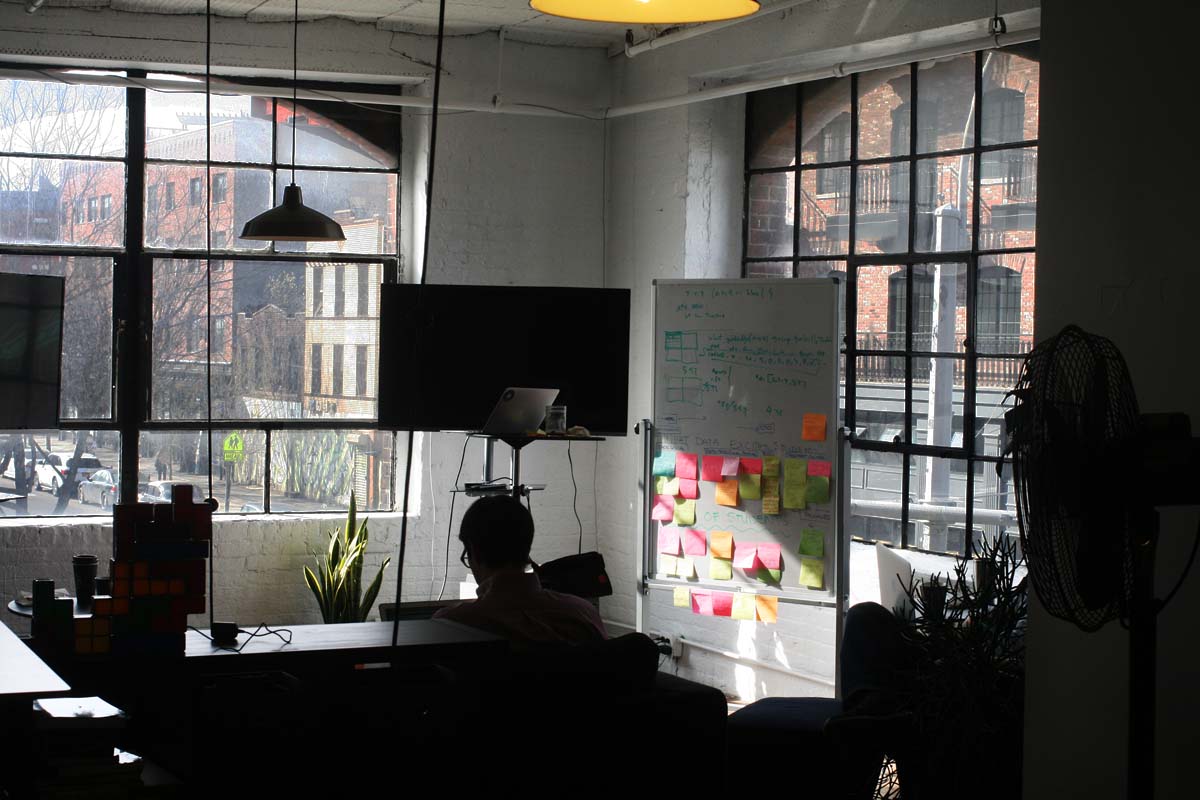CartoDB and DigitalGlobe released the first photos of Tesla’s Gigafactory on Mashable this weekend. While most people following technology know that Elon Musk has been building a giant battery factory in the Nevada desert, no one has been able to get a look at it.
Through a collaboration between a satellite imagery company and a mapmaking company, the public is finally able to get a look at the sheer scale of what Musk is building.
The release is a demonstration of a new partnership between the two companies, where satellite photos can be added to browser-based maps. CartoDB’s Andrew Hill explained that the Gigafactory story is a good illustration of how this partnership could be useful for telling stories about changing landscapes. Google offers satellite imagery on its maps, but there’s very little metadata about what you’re seeing and users can’t flip through different views.
When a piece of a landscape is changing quickly (because a giant factory is being built or because a forest is being clear cut), aerial photographs with accurate time and location data are key.
The photos can also be matched up precisely with maps, so users can draw connections between the images and streets and buildings or other landscape features with a high degree of fidelity.
CartoDB is the Spanish open-source mapping company that is slowly relocating itself from Madrid to Brooklyn, Hill said, during a recent visit to the company’s office, which overlooks Williamsburg’s Metropolitan Avenue. Hill, CartoDB’s Chief Science Officer, has been with the company since it started as a beta product in late 2011, he said.
We recently covered its $6.7 million funding round.
“We are slowly moving over here because there was this incredible scene,” Hill explained, of the company’s NYC relocation. The team has 12 people working in Brooklyn and 45 people overall. In Spain, the company is seen as an established, old-guard startup, which has its advantages, but there’s enough opportunity and energy stateside still to merit a gradual relocation, the company believes.
The team is actively reaching out to journalists, educators and educational institutions, Hill said. The company is well established in the civic hacking community (and bought pizza for every Maptime meetup in March).
CartoDB is even hosting a GeoJourNews Conference next month in Manhattan.
”Get
The company is using the same open source, software-as-a-service approach many other database companies use, including InfluxDB, which recently moved to Silicon Valley. Anyone can download CartoDB’s software, use it and even fork it. Users pay for a hosted cloud version, which also comes with access to the company’s team of mapmaking specialists.

Andrew Hill at his workstation, in the background, inside the Williamsburg office of CartoDB. (Photo by Brady Dale)
“Mapmaking had traditionally been pretty difficult to do,” Hill said. “CartoDB is about taking your own data and mixing with with other data that make it easy to get insights.” The company arose at roughly that moment when HTML5 and CSS3 were coming out, making the aesthetics of a map in a browser experience pleasant to use. Moving maps into browsers made it possible to show them to basically anyone with any kind of computer, as well.
Prior to that era, most mapping was viewed thru Esri’s (costly) ArcGIS.
Here are some Brooklyn-relevant maps or web apps built using CartoDB that may be of interest:
- Am I Rent Stabilized?
- 1940s New York
- Urban Reviewer, a map of NYC’s unfinished plans for urban renewal, from 596 Acres.
Before you go...
Please consider supporting Technical.ly to keep our independent journalism strong. Unlike most business-focused media outlets, we don’t have a paywall. Instead, we count on your personal and organizational support.
Join our growing Slack community
Join 5,000 tech professionals and entrepreneurs in our community Slack today!
